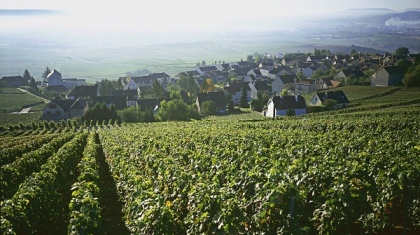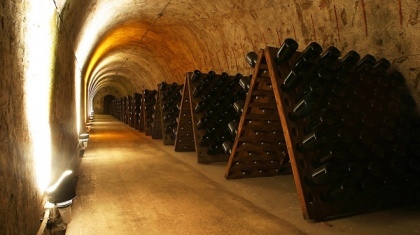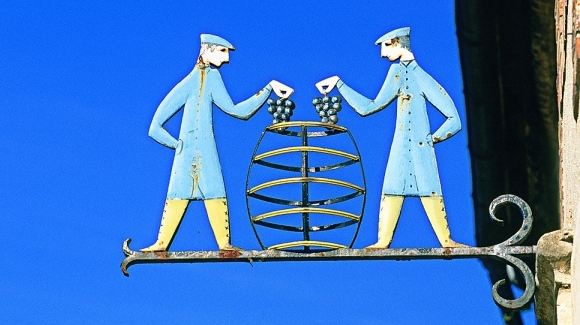Legend has it this delicate tipple, popular with kings and high society, was first introduced by Benedictine monks circa 1530. Hailing from the region of Champagne in northwest France from where this bottle fermented sparkling wine gained its identity, it quickly became iconic among the upper bracket.

For many years, Champagne was associated only with those who could afford to drink it. Eventually over time, and due to economic incline, the wine became more affordable and could be purchased and enjoyed by the middle class. To some producers this degraded the reputation of a once highly sought after delicacy, so in the early 90’s nearly all Champagne houses raised their prices over night by almost 100% to re-establish its status amongst the elite. But what is Champagne? Why is it so much more expensive than its Spanish and Italian rivals - Cava and Prosecco1?
 The timely and costly process used to create Champagne lies with the second stage of fermentation that takes place inside every bottle. The already part fermented wine is added directly to the bottle and placed on a large rack at an angle tilted about 45 degrees towards the sun. A stopper is then added to seal the bottle. These bottles are slowly rotated clockwise2 and angled slightly down, allowing the sediment to settle without disturbing the fermenting wine. Once all the sediment has settled near the stopper, the neck is then dipped in liquid nitrogen and knocked off, removing all the frozen sediment. This process can sometimes take many months and each bottle is hand rotated by the cellar master. Understanding the long and time-consuming process used to create such a fine product cannot help but give me well justified and profound appreciation for Champagne.
The timely and costly process used to create Champagne lies with the second stage of fermentation that takes place inside every bottle. The already part fermented wine is added directly to the bottle and placed on a large rack at an angle tilted about 45 degrees towards the sun. A stopper is then added to seal the bottle. These bottles are slowly rotated clockwise2 and angled slightly down, allowing the sediment to settle without disturbing the fermenting wine. Once all the sediment has settled near the stopper, the neck is then dipped in liquid nitrogen and knocked off, removing all the frozen sediment. This process can sometimes take many months and each bottle is hand rotated by the cellar master. Understanding the long and time-consuming process used to create such a fine product cannot help but give me well justified and profound appreciation for Champagne.Despite being crafted for kings, possessing such a status worthy to justify a dramatic instantaneous price increase and taking a near lifetime to create, rumours suggest Champagne holds a much more intriguing secret lurking inside her sensual curves and sleek, iconic bottle design. Discussion of aphrodisiacal powers is a common occurrence among connoisseurs, but the question remains to be answered, are there truths to these alluring claims?

Thanks to a steady stream of delicate bubbles created by natural fermentation, the alcohol in Champagne is introduced to the blood stream quicker than still wine, slowing your heart and caressing your body into a relaxed state of intoxication. Also, according to Dr Max Lake3, wine lover and researcher of natural aphrodisiacs aromatic powers, the scents of dry Champagne, particularly blanc de blancs (Champagne made entirely of chardonnay grapes) replicate the delicate aromas of female pheromones thus encouraging the male body to produce testosterone at an accelerated rate. Combine both of these intriguing discoveries; add a dose of Barry White and some gourmet French cuisine and you have an undoubtedly successful recipe for fireworks.

So if you have your eye on that certain someone and you think tonight is the night to make the leap towards romance, make sure Champagne is included in the menu.
1. Both Cava (Spain) and Prosecco (Italy) are sparkling wines like Champagne, with require standards to be labelled with the terms in their producing countries.
2. The process of turning the bottle is called riddling.
3. (24 July 1924 – 14 April 2009) Known as “the father of boutique wine” in Australia, a wine maker and surgeon.
